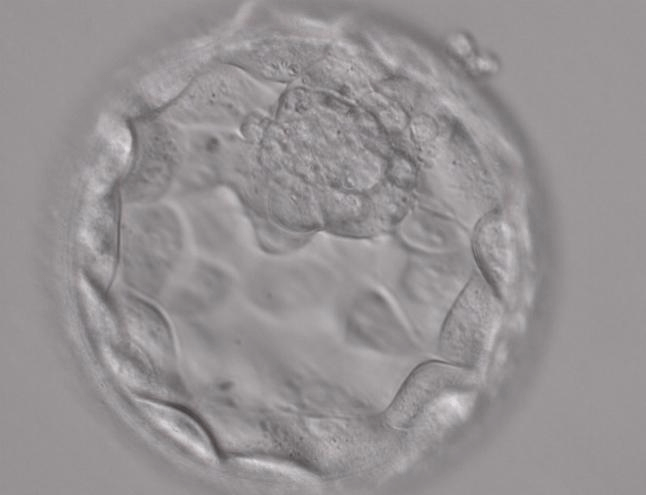Frozen Blastocyst Transfer
The blastocyst culture consists of maintaining the embryo culture in the laboratory until they reach the IVF blastocyst transfer stage on day 5 of the development.
In order to execute a successful blastocyst culture, it is essential to have a laboratory with a team of qualified biologists, guaranteeing that the embryos can continue developing without difficulties in Frozen Blastocyst Transfer.
What advantages does a blastocyst culture have?
If the embryos get a later replacement on day five, it is possible to observe the development of the embryos for longer. In addition, due to the longer time between the ovum collection and embryo transfer, the body gets more time to recover from hormonal treatment.
An IVF Blastocyst Transfer often has a higher probability of implanting, which leads to pregnancy (this is due to a better selection of the embryos to get transferred).
Usually, not all embryos reach the blastocyst stage because of the insufficient number of embryos to achieve a pregnancy. Conversely, embryos that reach the blastocyst stage on day 5 have a higher chance of achieving a pregnancy.

Blastocyst transfer and freezing
The blastocyst culture consists of maintaining the embryo culture in the laboratory until they reach the IVF blastocyst transfer stage on day 5 of the development.
In order to execute a successful blastocyst culture, it is essential to have a laboratory with a team of qualified biologists, guaranteeing that the embryos can continue developing without difficulties in Frozen Blastocyst Transfer.
How many blastocyst-stage embryos should be transferred?
The blastocyst culture allows us to select embryos with higher implantation potential; therefore, it can follow a more conservative approach when deciding the number of embryos to transfer. Also, the clinical history of each patient changes, but in cases with good prognoses, the recommendation will be to transfer a single embryo.
Blastocyst cultivation frequently carried out by more fertilized ova are available. However, if an embryo reaches the blastocyst stage, the protective shell (also known as the zona pellucida) surrounding it is fragile. Therefore, the assisted hatching procedure will not occur on embryos in the blastocyst stage. In the case of cryopreserved ova, a blastocyst cultivated is also possible but is rarely carried out.
Positive results: What is the blastocyst transfer success rate?
Transferring a single blastocyst stage embryo offers significant changes for pregnancy; it reduces the potential for multiple pregnancies.
Can embryos in the blastocyst stage be frozen?
With blastocyst culture, we will have fewer embryos to freeze but ones of higher quality. In addition, the survival rate of frozen blastocyst-stage embryos is very high, increasing the chances of achieving a pregnancy.

